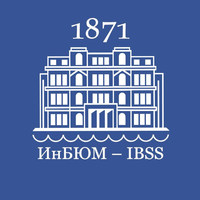Grant of the Ministry of Science and Higher Education of the Russian Federation No. 075-15-2024-657 “Assessment of vulnerability of coastal ecosystems in the tropical zone to climate change for the purpose of adapting of governance nature management”
Project acronym VULNECOAST
The project is supported by the Ministry of Science and Higher Education of the Russian Federation as part of its grant program in the field of science, provided in the form of subsidies from the federal budget. These subsidies enable scientific research by Russian scientific organizations and/or higher education institutions in collaboration with foreign organizations, facilitating the implementation of bilateral and multilateral scientific and technological cooperation programs
Project Objective
The objective of this work is to investigate the response of tropical coastal ecosystems to global climate change and to develop a decision-making system for minimizing the impacts of climate change using Fuzzy Logic. The research develops a methodology, implemented in a digital environment, which enables the assessment of the geo-ecological condition of various types of tropical coastal ecosystems. This methodology will be integrated into an optimized nature management system based on Fuzzy Logic.
The project is implemented under the BRICS STI Framework Program “Climate Change Adaptation and Mitigation,” which supports outstanding research in key areas where a multinational approach can yield the most substantive results. The initiative aims to foster collaboration among scientists and research institutions within consortia that include partners from at least three BRICS countries.
Project Coordinator
Tatiana GORBUNOVA, Candidate of Geographical Sciences, Senior Researcher of the Landscape Ecology and Geomatics Laboratory
Key Team Members
Roman GORBUNOV, Doctor of Geographical Sciences, IBSS Director
Svetlana KRASHENINNIKOVA, Head of the Department of Marine Ecosystem Functioning
Vladimir TABUNSHCHIK, Candidate of Geographical Sciences, Head of the Landscape Ecology and Geomatics Laboratory
Maria SAFONOVA, Researcher at the Landscape Ecology and Geomatics Laboratory
Andrei KELIP, Head of the Shared Research Facility "Remote Sensing"
Team Members
Ilya SERYKH, Candidate of Physical and Mathematical Sciences
Alexandra NIKIFOROVA, Junior Researcher at the Landscape Ecology and Geomatics Laboratory
Nastasya LINEVA, Leading Engineer at the Landscape Ecology and Geomatics Laboratory
Polina DRYGVAL, младший научный сотрудник лаборатории ландшафтной экологии и геоматики
Veronika VOYCEKHOVSKAYA, младший научный сотрудник отдела радиационной и химической биологии
Anastasia BASHKIROVA, ведущий инженер отдела функционирования морских экосистем
International Project Partners
Federal University of Rio de Janeiro (Brazil)
1) Fabio Luiz Peres Krykhtine, D.Sc. in Industrial Engineering, Federal University of Rio de Janeiro, Polytechnic School at UFRJ. Special Coordinator for International Relations with the Russian Federation, project manager with an MBA in Project Management from the Fluminense Federal University (2006). Participant in international research groups, developing projects for BRICS and collaborating with universities in Russia, the USA, France, China, the UK, among others.
2) João Paulo Machado Torres, D.Sc. in Biophysics, Professor, Federal University of Rio de Janeiro, Carlos Chagas Filho Biophysics Institute. Specialist in environmental biophysics, focusing on environmental pollution, DDT, PCBs, chlorinated hydrocarbons, and environmental contamination.
3) Osvaldo Moura Rezende, Ph.D. in Civil Engineering, Professor, Federal University of Rio de Janeiro, Polytechnic School at UFRJ. Co-author of the book “Urban Drainage—From Traditional Design to Sustainability,” edited by Elsevier (2015), and recipient of the Jabuti Award, third place in the “Engineering, Technology, and Informatics.” Works in flood risk management, sanitation, and water resources, developing research and projects which include computational mathematical and flood modeling in urban and rural areas.
4) Carlos Alberto Nunes Cosenza, Ph.D. in Industrial Engineering, Professor, Federal University of Rio de Janeiro, Polytechnic School at UFRJ.
5) Fabiano Lopes Thompson, Ph.D. in Biochemistry, Professor, Biology Institute at UFRJ. Coordinated the Advanced Research Network in Marine Biotechnology and projects with Germany, Argentina, Belgium, France, the Netherlands, Japan, Mexico, and the USA. Experienced in microbiology, focusing on oceanography, reef systems, marine microbiology, microbial taxonomy, microbial biodiversity, metagenomics, vibrios, and marine biotechnology. One of the first oceanographers to explore the new Amazon/Great Amazon Reef biome. Coordinates the National Network of Marine Biotechnology MCTI.
Durban University of Technology(South Africa)
1) Oludolapo Akanni Olanrewaju, DTech in Industrial Engineering, Professor, Durban University of Technology.
2) Joseph Samuel Akpan BEng Mechanical Engineering, South African National Energy Development Institute (SANEDI), Izovutha Pty Ltd.
3) Felix Mora Camino, Dr Ing (Ph.D.) in control and Dr in Science (Ph.D.) in Operations Research, Professor, Faculty of Industrial Engineering. Member of the Franco-Spanish Working Community of the Pyrenees from 2000 to 2010, focusing on environmental conservation issues in the region. Headed the international scientific team early COVID-19 outbreak to model disease spread and study the effects of isolation policies. Currently part of a team managing environmental conservation in a coastal city in Brazil.
4) Maliga Reddy, Ph.D. Disaster and Risk Management, Deputy Director in the Department of Public Management, Durban University of Technology, specializing in public management and economics. As an emerging researcher and disaster manager, he is actively involved in the Disaster Management and Risk Community of Practice.
5) Oluyomi Ajayi, Ph.D. in Industrial Engineering, President of the Productivity Institute, South African National Energy Development Institute (SANEDI), Izovutha Pty Ltd., specializing in efficient energy management and sustainable development. Combining theories with practice in sustainability and sustainable development for over two decades, he has demonstrated leadership in complex, multifaceted climate change mitigation projects across all continents.
Five Levels of Research Objectives
1. Identify the role of global climate processes in climate change on key study areas (the northern and eastern coasts of the Black Sea (subtropical ecosystems), the coastal ecosystems in the region of Rio de Janeiro (Brazil), and the western coast of South Africa (tropical ecosystems)), specifically: select “ocean-atmosphere” models which most accurately reproduce hydrometeorological parameters over the historical observation period, and forecast changes in air temperature and precipitation under various greenhouse gas emissions scenarios for the test sites. Analyze heat hotspots, their growth and dynamics, and identify thermal pollution. The verification of the “ocean-atmosphere” models within the framework of CMIP 5 and 6 projects for the historical period will be conducted by comparing them with observational data from meteorological stations at the test sites. Subsequently, using the selected model, a forecast of temperature and precipitation changes for the next 50 years will be provided.
2. Detect ecosystem responses to climate change: analyze the dynamics and forecast changes in vegetation cover, establish links between vegetation index variability and global climate indices, air temperature, and precipitation. Identify areas of anomalies in vegetation indices, air temperature, and precipitation associated with maximum and minimum values of selected climate indices. Analyzing vegetation through vegetation indices offers several advantages: NDVI provides direct quantitative measurement of green biomass, and the method is sensitive to changes in vegetation condition. Forecasting vegetation dynamics and vegetation indices using the Hurst index has proven to be an effective approach. Changes in climate indices can impact precipitation and temperature, which in turn affect the growth and quantity of green phytomass. Studying the correlation between the climate and vegetation indices can aid in predicting the consequences of climate change.
3. Identify the responses of natural-anthropogenic ecosystems to climate change: assess the impact of various factors on the dynamics of land cover types; forecast soil loss and erosion processes; evaluate the potential for flooding due to climate change and increased anthropogenic pressure. The use of satellite imagery and datasets on land cover types allows for more accurate classification and analysis of diverse changes occurring on land using modern remote sensing methods and geographic information systems. Land cover data allows for tracking changes over time, which is beneficial for environmental and resource monitoring and contributes to the development of online monitoring research. Geospatial modeling of flood and inundation risks, erosion processes, and soil loss enables spatial-temporal assessment of these processes in climate change.
4. Develop a methodology for geo-ecological assessment of tropical coastal ecosystems in climate change, implemented in a digital environment. Justify the criteria for geo-ecological assessment of tropical coastal ecosystems based on remote sensing and geo-information modeling data (climate change, ecosystem response parameters, air pollution, anthropogenic transformation, population dynamics, and density, among others). Evaluate the selected criteria and create integrated maps of the geo-ecological condition of key study areas in climate change. Develop an algorithm capable of describing the effects of climate change in coastal zones.
5. Develop a digital product to implement the methodology for geo-environmental assessment of tropical coastal ecosystems in climate change. Integrate the methodology for assessing the geo-ecological status of ecosystems into a decision-making module for natural resource management, built using Fuzzy Logic methods. Develop a decision-making module based on the developed climate change scenario for coastal zones. Based on the data from the decision-making module, formulate recommendations for adapting the natural resource management system in response to climate change, using Fuzzy Logic methods.
Research Results in 2024 (Brief)
The CMIP5 (GFDL, MPI) and CMIP6 (GFDL) models were analyzed, focusing on their historical and forecast data for air temperature and precipitation in three test regions. For the historical period of 2006–2023, a comparison of multi-year averages and long-term trends in meteorological parameters (Ta, P) was conducted using data from meteorological stations, ERA5 reanalysis, and CMIP5 models (GFDL, MPI).
Research on ocean-atmosphere models identified the most suitable ones for forecasting temperature and precipitation changes over the next 50 years. For the Black Sea region and the western coast of South Africa, the selected models are GFDL-4.5 and GFDL8.5, while for the state of Rio de Janeiro, the models are MPI4.5 and MPI8.5. A forecast of temperature and precipitation changes was provided based on six models.
The correlation between NDVI variability and global climate indices, air temperature, and precipitation were established. For each key study site, areas with NDVI anomalies, air temperature, and precipitation associated with the maximum and minimum values of selected climate indices were identified.
Calculations of urban heat island dynamics revealed an increase in surface temperature and heat hotspots in the Black Sea region and the Western Cape of South Africa, with a decrease observed in the state of Rio de Janeiro.
Using the NDVI, the dynamics of vegetation cover were analyzed, identifying territories with decreasing and increasing phytomass, as well as areas with no significant changes for each of the studied sites. The calculated trend of vegetation cover change indicates a continuing change in NDVI across all sites, without a shift in direction.
Webinars and in-person seminars were conducted among project participants, along with field studies in the test area of Rio de Janeiro state, examining the natural and anthropogenic characteristics of the territory.
Key vulnerability factors of coastal areas were analyzed, and criteria and indicators necessary for modeling a decision-making system for natural resource management were determined.
In-Person International Scientific Seminar for Grant Recipients in Partner Country (Brazil)
On December 9–19, 2024, within the international grant project, the Federal University of Rio de Janeiro, one of the leading universities of Brazil, held the first in-person international scientific seminar for grant recipients (Fig. 1). The primary objective of the seminar was to discuss the current progress of research within the project, identify solutions to the scientific challenges posed, share expertise, and mutually evaluate the methodological approaches employed by the project participants.

1. Working meeting at the in-person international seminar, Federal University of Rio de Janeiro
The seminar primarily focused on discussing the interim research results obtained (Fig. 2). Working meetings were held to conduct detailed analyses of the methodologies employed by various research groups and to assess their effectiveness. Special emphasis was placed on identifying challenges and collectively developing solutions to enhance the quality and efficiency of achieving the project’s objectives. This exchange format strengthened scientific ties among partners and improved the quality of the research.

2. Discussion of the project’s preliminary results
The seminar also included visits to key research facilities at the Federal University of Rio de Janeiro. Grant recipients had the opportunity to explore the advanced infrastructure of the Ocean Technology Laboratory in the university’s Tech Park (Fig. 3). One of the largest tanks for modeling wave and current behavior and impacts, allowing for experiments replicating various hydrodynamic conditions, was of particular interest (Fig. 4). Moreover, participants visited the Water and Cities Laboratory (Fig. 5) and the Faculty of Water Resources and Environment, where they listened to presentations on research themes (Fig. 6). These visits featured discussions with leading Brazilian scientists, facilitating the exchange of advanced expertise and technologies in water resources and coastal territory management.

3. Project visit to the Ocean Technology Laboratory

4. Visit to the tank for modeling wave and current behavior and impacts, Ocean Technology Laboratory
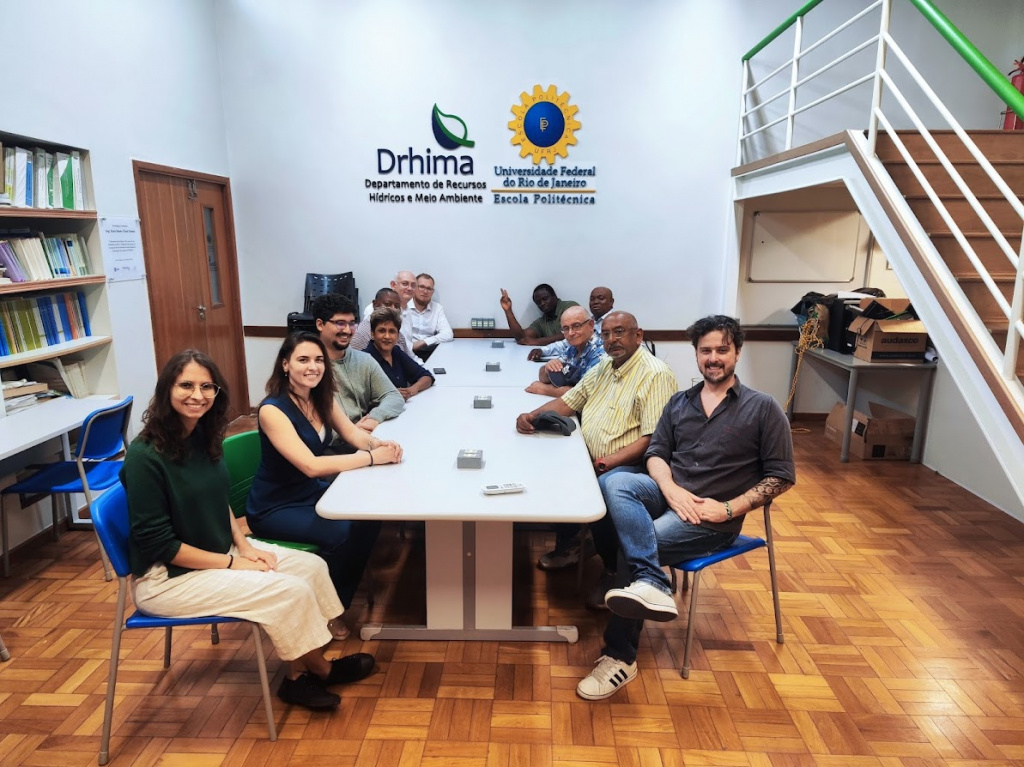
5. Visit to the Water and Cities Laboratory
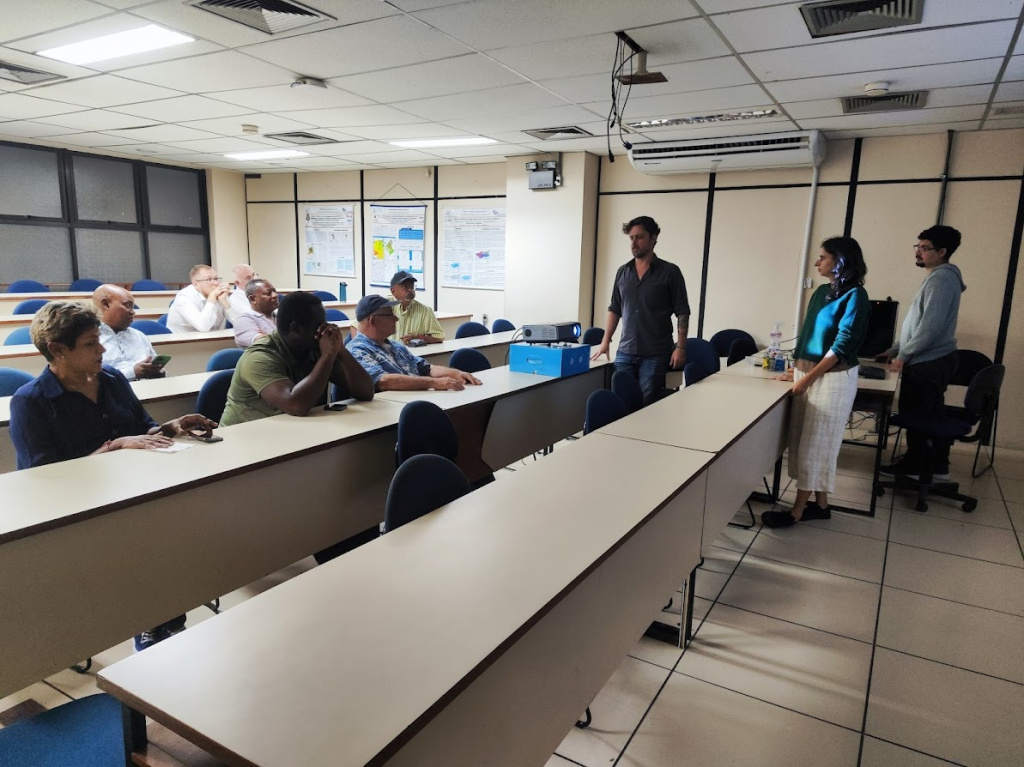
6. Discussing current research findings
A significant part of the seminar program was devoted to the visit to the Rio de Janeiro Operations Center (Fig. 7, 8). This visit provided an opportunity to explore the city’s urban management, monitoring, and emergency response systems, which are directly relevant to research on sustainable urban development and climate change adaptation. Project participants were able to assess how modern information technologies are used to address urban challenges.
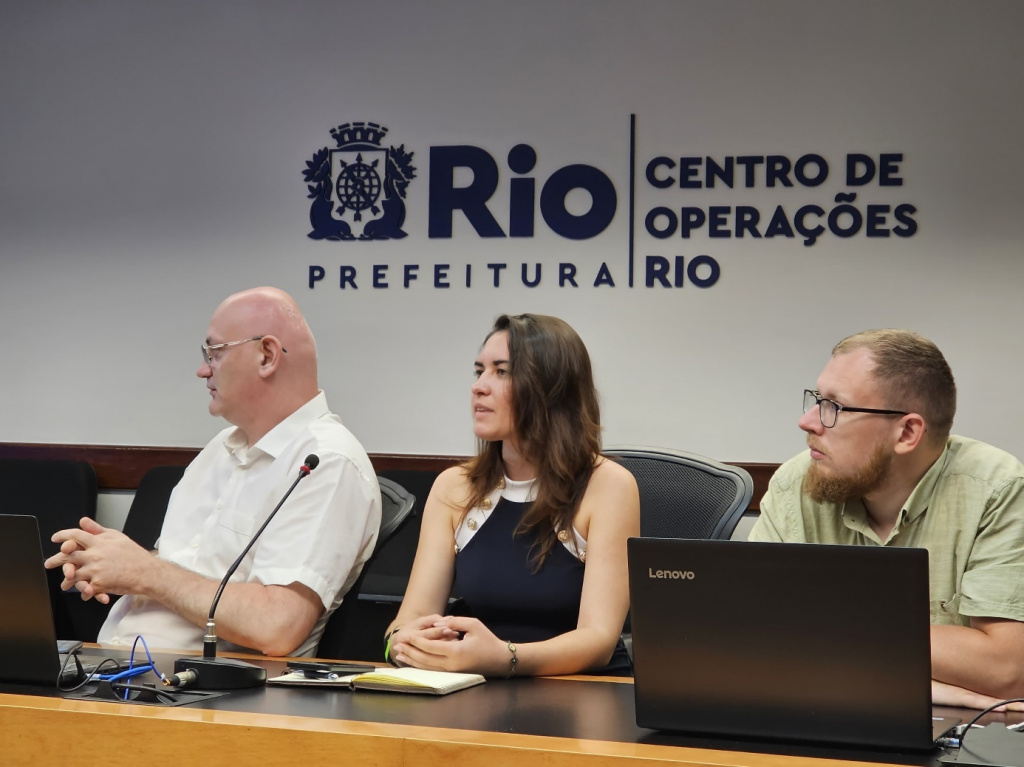
7. Russian delegation at the Rio de Janeiro Operations Center
The seminar also hosted a field expedition, where project researchers got to visit various areas of the Rio de Janeiro Macroregion, stretching from the city of Rio de Janeiro to Arraial do Cabo (Fig. 9). The expedition aimed to study the natural and anthropogenic features of the territory (Fig. 10). Special attention was given to the state of vegetation, the shoreline, the presence and features of infrastructure, erosion processes, and land degradation.
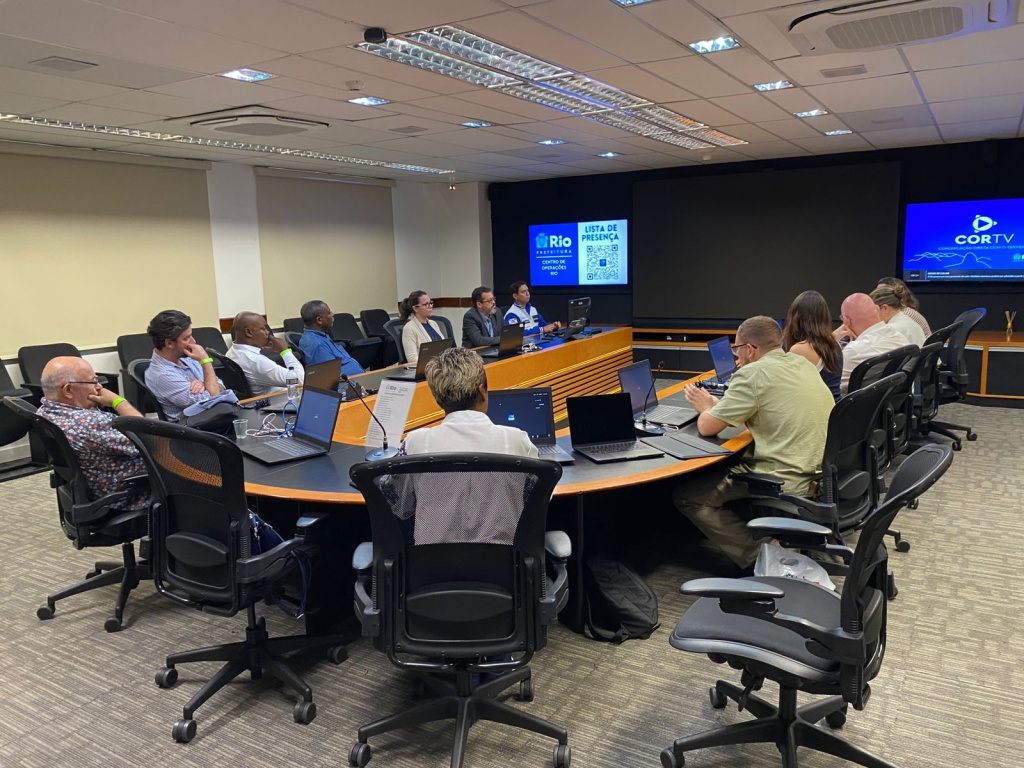
8. Meeting of project participants at the Rio de Janeiro Operations Center
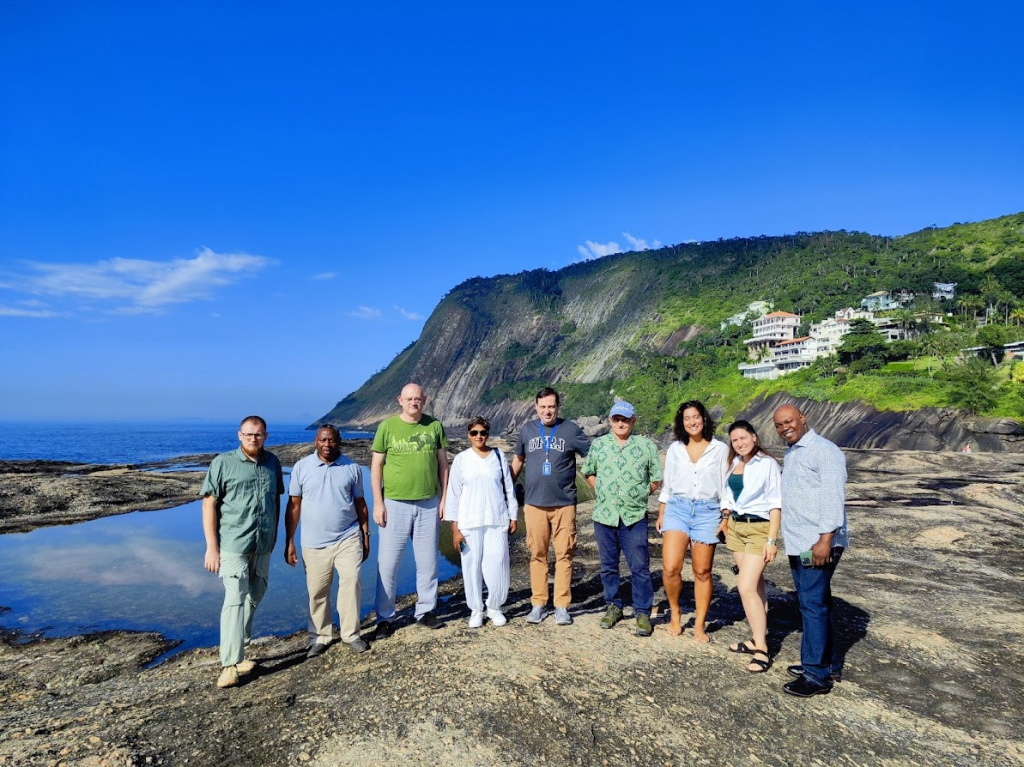
10. Visit to the coastal areas of Rio de Janeiro State, Brazil
The expedition identified key features and characteristics of the test sites, which will be used for comparative analysis in the future. Field observations provided a more comprehensive understanding of the specifics of the studied territories for further research.
At the working meetings, project participants presented their first-year results and collaboratively developed criteria for the geo-ecological assessment of the test sites, as well as criteria for the vulnerability of coastal areas (Fig. 11).
The first in-person international scientific seminar for grant recipients in Brazil marked an important stage in the project’s implementation. It facilitated deeper collaboration among participants, refined research goals and objectives, fostered the exchange of expertise, and gathered necessary information about key areas. The results obtained at the seminar will be used for the further implementation of the grant project and the publication of scientific findings.
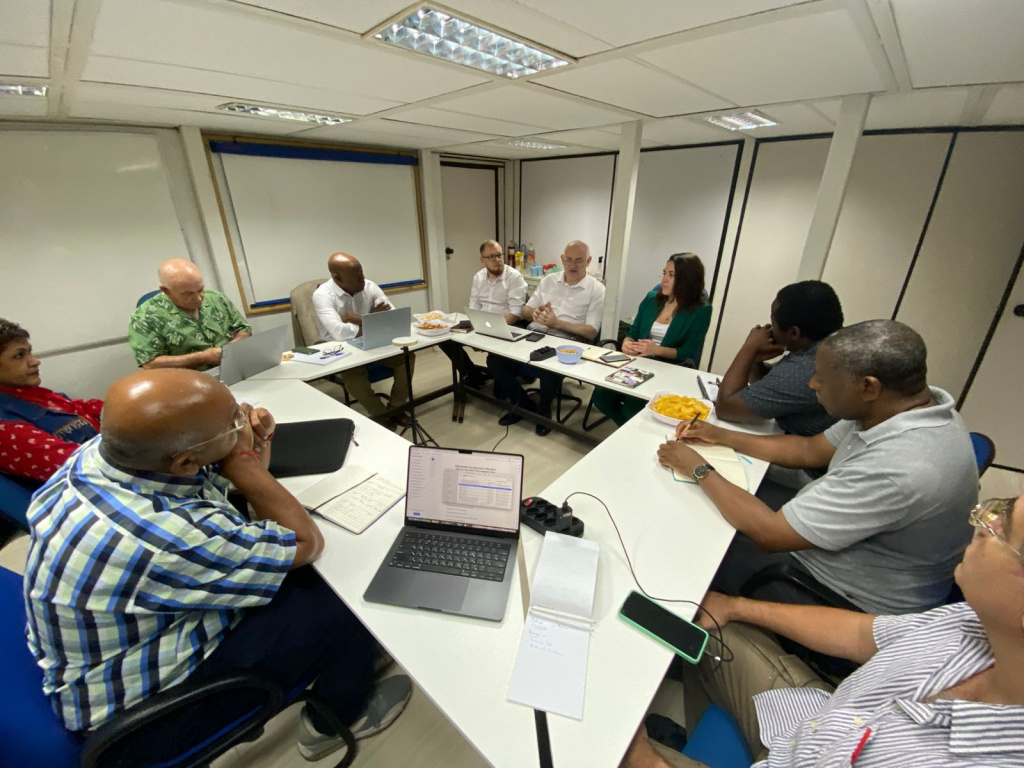
11. Discussions on criteria for geo-environmental assessment of key sites and vulnerability assessment of coastal ecosystems
Project News
https://ibss-ras.ru/News-IBSS/2785/?sphrase_id=3629935

